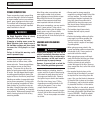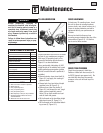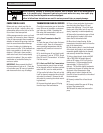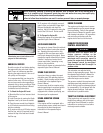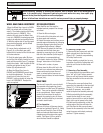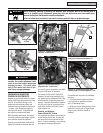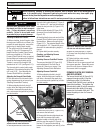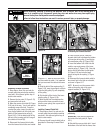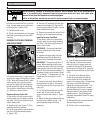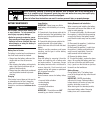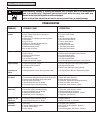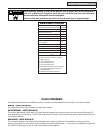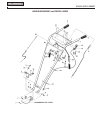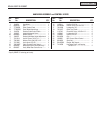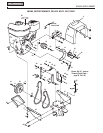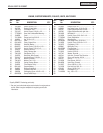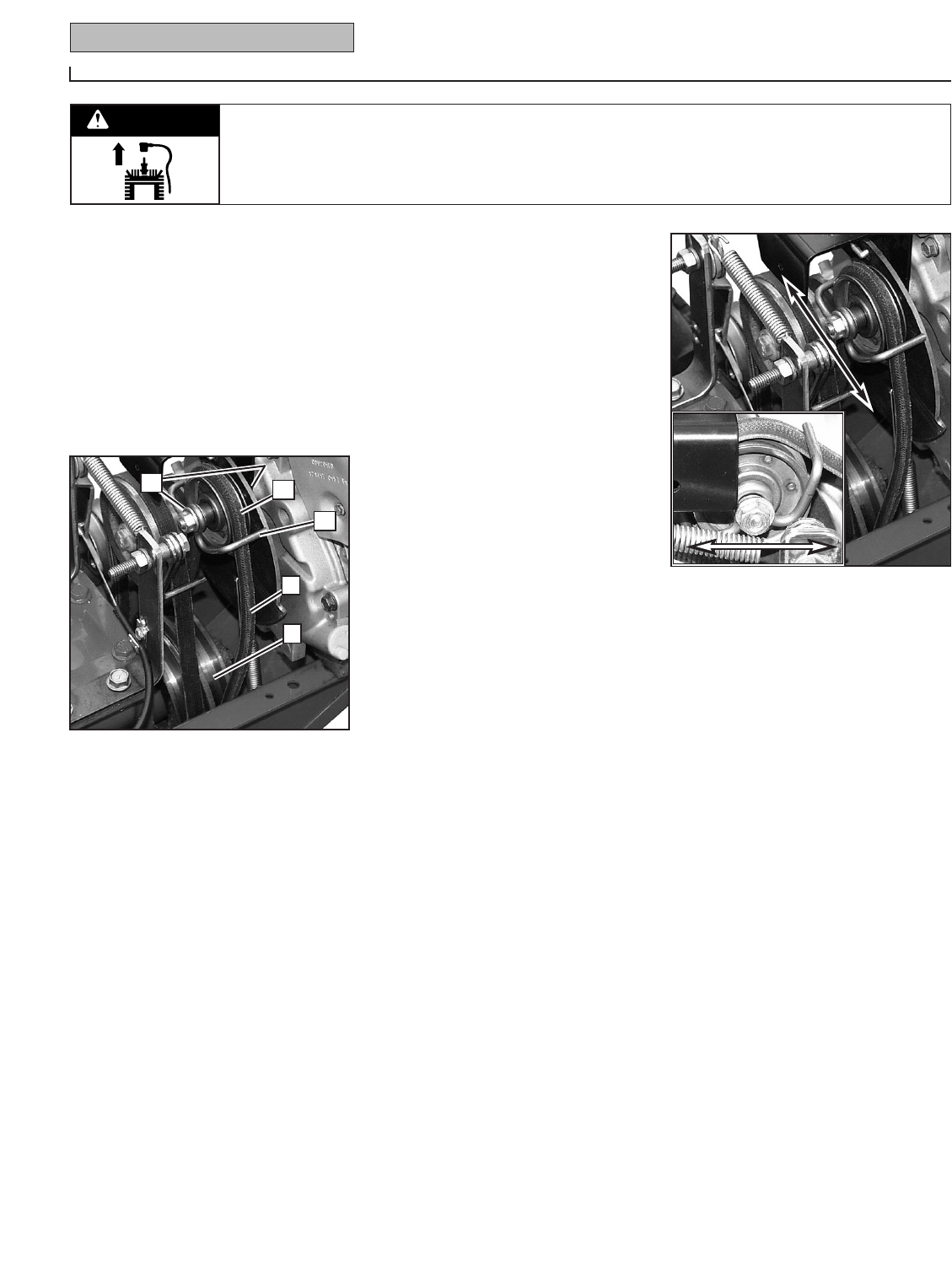
24 Section 5: Maintenance
Before inspecting, cleaning or servicing the machine, shut off engine, wait for all moving parts to
come to a complete stop, disconnect spark plug wire and move wire away from spark plug.
Remove the key from the keyswitch on units so equipped.
Failure to follow these instructions can result in serious personal injury or property damage.
WARNING
pull down on the belt and roll it onto the
large, forward-most groove of the trans-
mission pulley (P, Figure 5-20).
7. Reinstall the belt cover.
8. Test for correct tension on the forward
clutch belt (see Checking Forward Belt
Tension).
REVERSE CLUTCH BELT REMOVAL
AND REPLACEMENT
The reverse clutch belt (J, Figure 5-22) is
driven by the engine drive pulley (I, Figure
5-20). When the Reverse Clutch Control
knob is pulled out, it pulls the reverse
idler arm and pulley (N) which tightens
the belt against the engine drive pulley.
This drives the transmission drive pulley
(L), resulting in reverse motion.
Removing Reverse Clutch Belt
1.
Stop engine, allow it to cool and dis-
connect spark plug wire before working
near belts. Also remove ignition key on
electric start models.
2. Remove belt cover (Figure 5-13) by
removing two flange locknuts.
3. Pull the reverse clutch belt downward
and slip it off the transmission pulley
(L, Figure 5-22).
4. Use two 1/2" wrenches to loosen and
remove wire belt guide (R, Figure 5-22)
from the reverse idler arm pulley. Do not
remove locknut and screw.
5. Remove the reverse belt and pull it out
through front of transmission housing.
Installing Reverse Clutch Belt
1.
Stop engine, allow it to cool and dis-
connect spark plug wire before working
near belts. Also remove ignition key on
electric start models.
IMPORTANT: The forward clutch belt
must be installed before the reverse
clutch belt.
2. Install the forward clutch belt (see
Installing Forward Clutch Belt in this
section) before installing reverse belt.
IMPORTANT: The reverse belt has a ‘V”
shape. When installing the belt, make
sure that the widest (flat) side of the belt
rides against the reverse idler pulley (N,
Figure 5-22) and transmission pulley (L).
If needed, the belt can be twisted “inside
out” so that the “V” shaped side is on the
outside and the widest side is on the
inside.
3. Insert the belt down into the front of
the transmission housing. Slip the top
half of the belt onto the reverse idler arm
pulley (N).
4. Pull the belt downward and loop the
bottom half of belt around the front
groove of transmission pulley (L, Figure
5-22).
5. Mount the belt guide between the two
flat washers and tighten snugly. The
guide needs adjusting before fully
tightening.
6. (You will need an assistant to help
with this step.) Pull the reverse idler
pulley (N) up to its highest point and
position the belt guide (R) horizontally
level as shown in Figure 5-23. Securely
tighten the screw and lock nut (M, Figure
5-22).
7. Pull back on the Reverse Clutch
Control knob and make sure that the
reverse clutch belt fully contacts the
groove in the engine pulley. Release knob
and make sure that the belt doesn’t
engage the reverse engine pulley. This
may cause the unit to move in reverse
when the Wheel Gear Lever is engaged.
Adjust the cable for less tension if this
condition occurs. See
Checking and
Adjusting Reverse Belt Tension for more
information.
8. Reinstall the belt cover and secure it
with two flange locknuts.
9. Test the unit in an open location.
Figure 5-22: Right-side view.
Figure 5-23: Reverse belt guide positioning.
J
N
R
L
M



